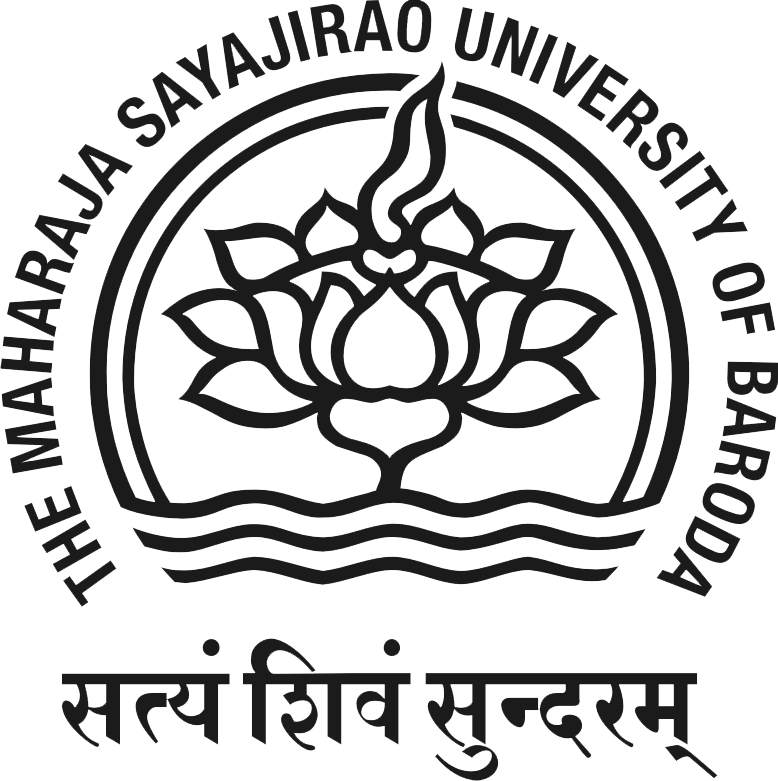
 About the M S University
About the M S University
Known as the city of Banyan trees, Vadodara is one of the fastest growing industrial cities in India. It is on the main line linking Mumbai and New Delhi on the Western coast of India and is known for its beautiful gardens, palaces, and cultural, professional and recreational centers.
The M S University of Baroda is one of the oldest and largest Universities in India and boasts of brilliant scholars and renowned writers like Shri Aurobindo, Vinoba Bhave, K M Munshi, R V Desai, I G Patel, Smt Hansa Mehta(the first Vice-chancellor), Shri Ambedkar, Sam Pitroda and Venkatraman "Venky" Ramakrishnan as their alumni.
The Faculty of Technology and Engineering as it stands today was formed along with the establishment of M S University in 1949 and is popularly known as the Kala Bhavan Technical Institute (KBTI). Established in June 1890 by His Highness the late Maharaja Sayajirao Gaekwad III of Baroda State, Kala Bhavan started modestly by imparting education in Civil, Mechanical, Electrical Engineering, Drawing & Painting, Architecture & Photo-Engraving, Textile Chemistry and today has grown to 15 departments.
About Faculty
The Faculty of Technology and Engineering as it stands today formed alongwith the establishment of the Maharaja Sayajirao University in 1949 is an outgrowth of what was popularly known as the "Kala Bhavan Technical Institute" (KBTI) established in June 1890 by his late Highness The Maharaja Sayajirao Gaekwad III of Baroda state. In May 1990,it completed 100 years of glorious services for the cause of Technical Education.
The Kala Bhavan started its activity in 1890 with the modest but novel objective of producing skilled artisans and apprentices by imparting instruction in local language in the following fields:
Civil, Mechanical, and Electrical Engineering,Drawing and Printing, Architecture and Photo engraving, Textile Chemistry including Dyeing, Bleaching, Sizing & Printing, oil and Soap making etc, With the assistance of German experts and foreign trained teacher under the able stewardship of Principal T. K. Gajjar. Other courses on Textile Technology(weaving), Furniture making and Fine Arts were started later. Principal C. H. Vora consolidated these pioneering efforts into a Polytechnic by starting a variety of Diploma and Certificate courses in the above major disciples, with the additional staff, laboratories and buildings. The Polytechnic status with steady development continued until 1949 when the Kalabhavan was converted into the Faculty of Technology and Engineering (with the establishment of The Maharaja Sayajirao University of Baroda, following generous donation by the Gaekwads for the University and the New Building of the Institute). From this stage onwards, the Institute developed rapidly recognizing no bounds.
These hectic developments resulting in creation of 15 departments, a workshop, a library and several buildings were possible due to the financial support mainly from UGC and aided by UNDP, USAID and Government agencies and also due to the dedicated efforts by the Institute, Deans and Teachers. Faculty laboratories and departments received massive aid of $1,050,000 for development from the United Nations Development Program(UNDP). The aid was given to develop infrastructure facilities in the area of Fracture Mechanics, Water Resources and Environmental Engineering, Turbojet propulsion and Microprocessor Applications. In 1986, Post Graduate courses on (i) Fracture Mechanics (ii) Irrigation Water Management (iii) Turbojet Propulsion and (iv) Microprocessor Applications were introduced.
Under USAID program, faculty received a massive grant of Rs. 4 crore from Water Resources Department and Narmada Department of Government of Gujarat for development of undergraduate and postgraduate program of Irrigation Water Management in March 1991. Constant efforts are made to update curriculum, improve teaching, enhance infrastructure and laboratory facilities, promote research and establish linkages with the Society and Industries and above all, emphasis on excellence.
Under the Quality Improvement Program of Department of Electronics , now called Ministry of Information Technology, Department of electrical Engineering and Department of Computer Science received electronic equipments, computers and softwares worth Rs. 200 crores. This project was named as IMPACT project and was for the improvement of laboratory facilities for under graduate degree program. MIT later on partly supported the maintenance of equipments and computers under the sustainability support scheme.
Department of Science and Technology agreed to support to the tune of Rs. 112 lacs to the Pharmacy Department under the MISSION REACH. This project is called TIFAC CORE -- Center of Relevance and Excellence. Under this project, Industrial Partnership is also expected. UGC, under the SAP Program granted DRS Phase III and COSIST Program to Metallurgical Engineering Department and DRS Phase I to Pharmacy Department. Pharmacy Department is also likely to become QIP center for M.Pharm. and Ph.D. under AICTE QIP.
The reputed faculty members leave profound influence by their expertise at the major national & international conferences, seminars and refresher courses and help shape the future trends in technical education. That our Alumni have performed excellently in higher education and in challenging jobs in India and abroad (particularly USA) and have achieved higher key positions, bears testimony to the quality of education imparted. The Institute is always a preferred choice for a student to become an engineer and for the employer to grab its competent engineers for jobs. Thus, it has taken more than a century of dedicated efforts of a few pioneers and visionaries to raise the old KALA BHAVAN to the stature of a mighty technical institute in the forefront of technical education in the service of the nation. ( Courtesy : Prof. P. B. Desai )